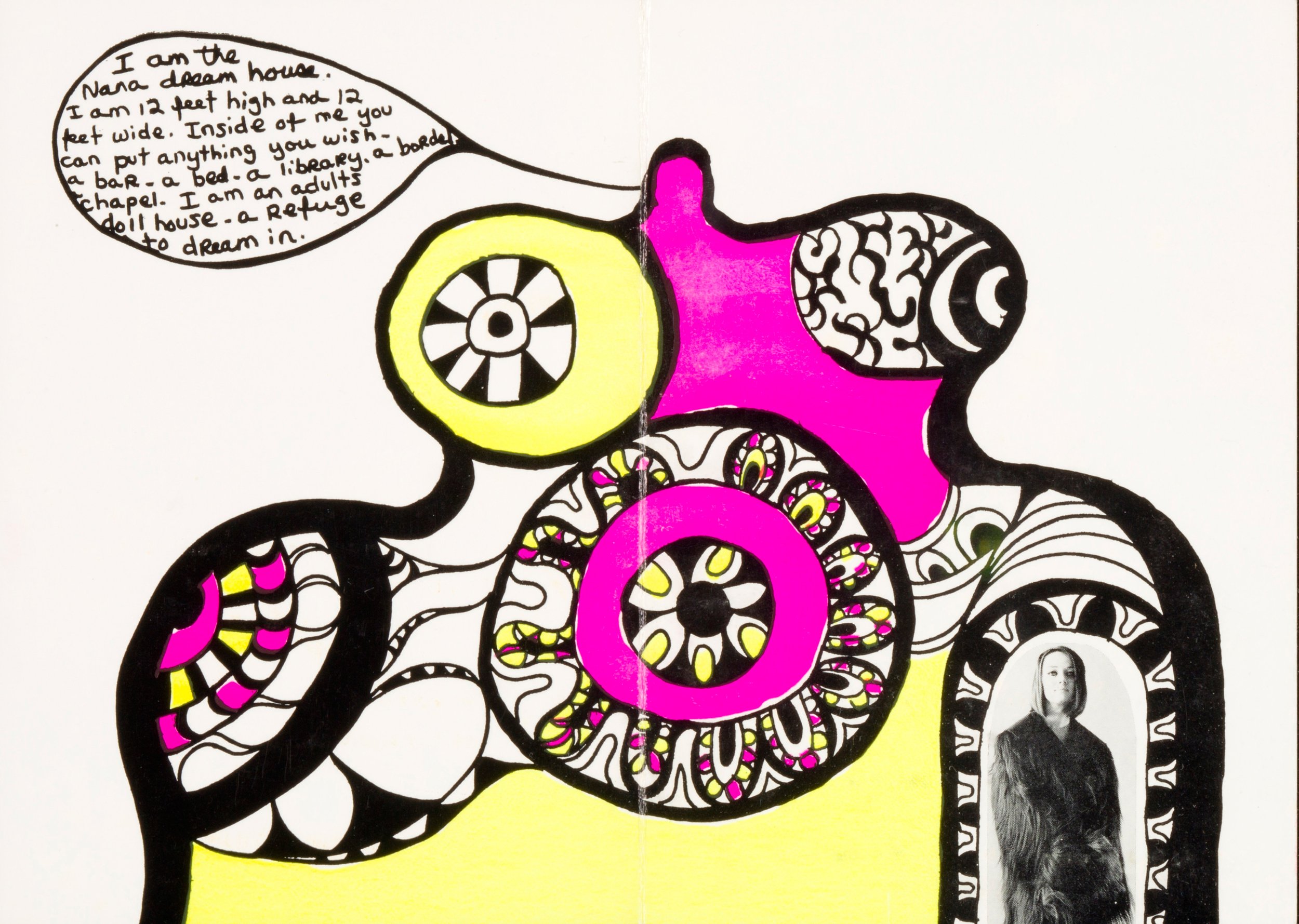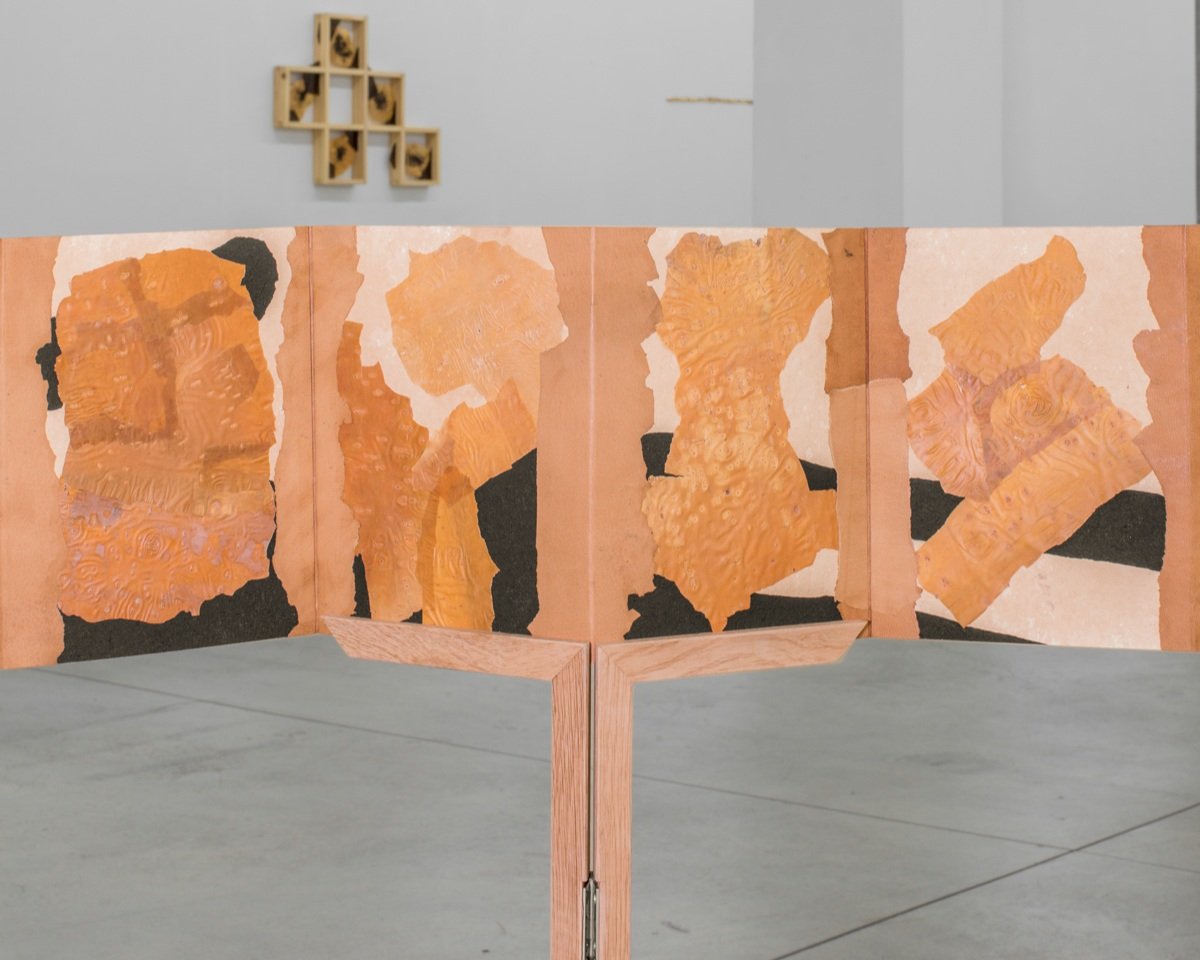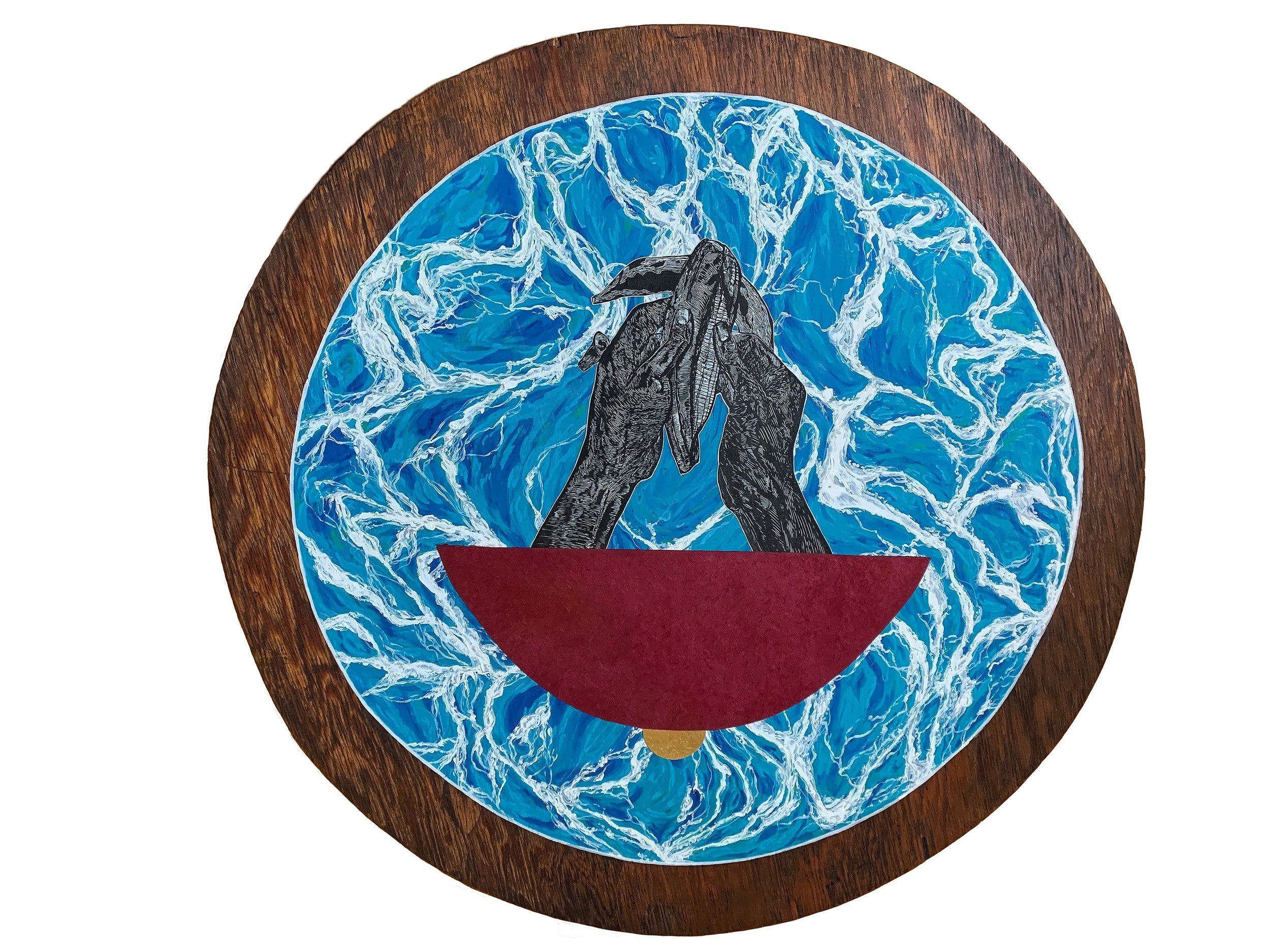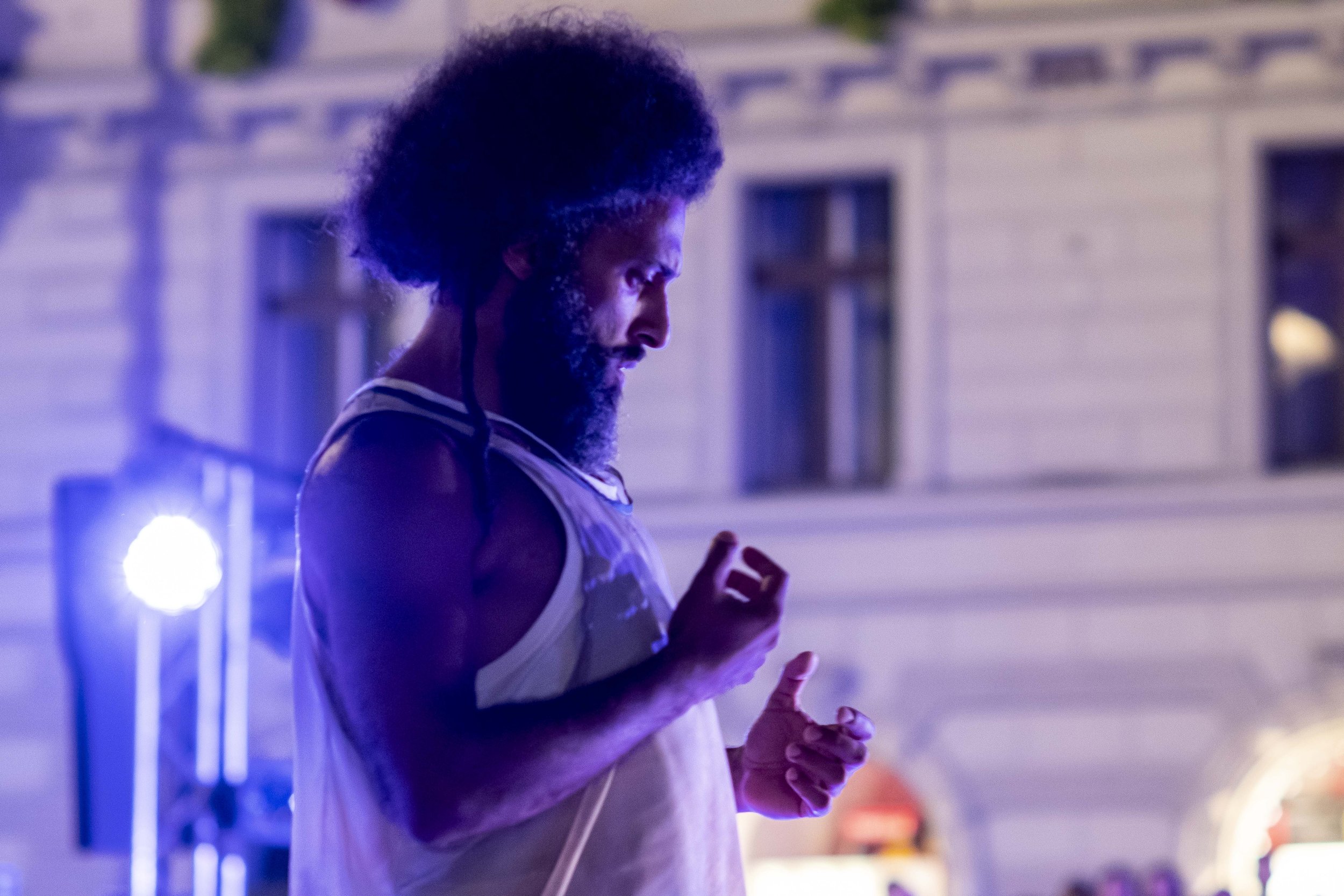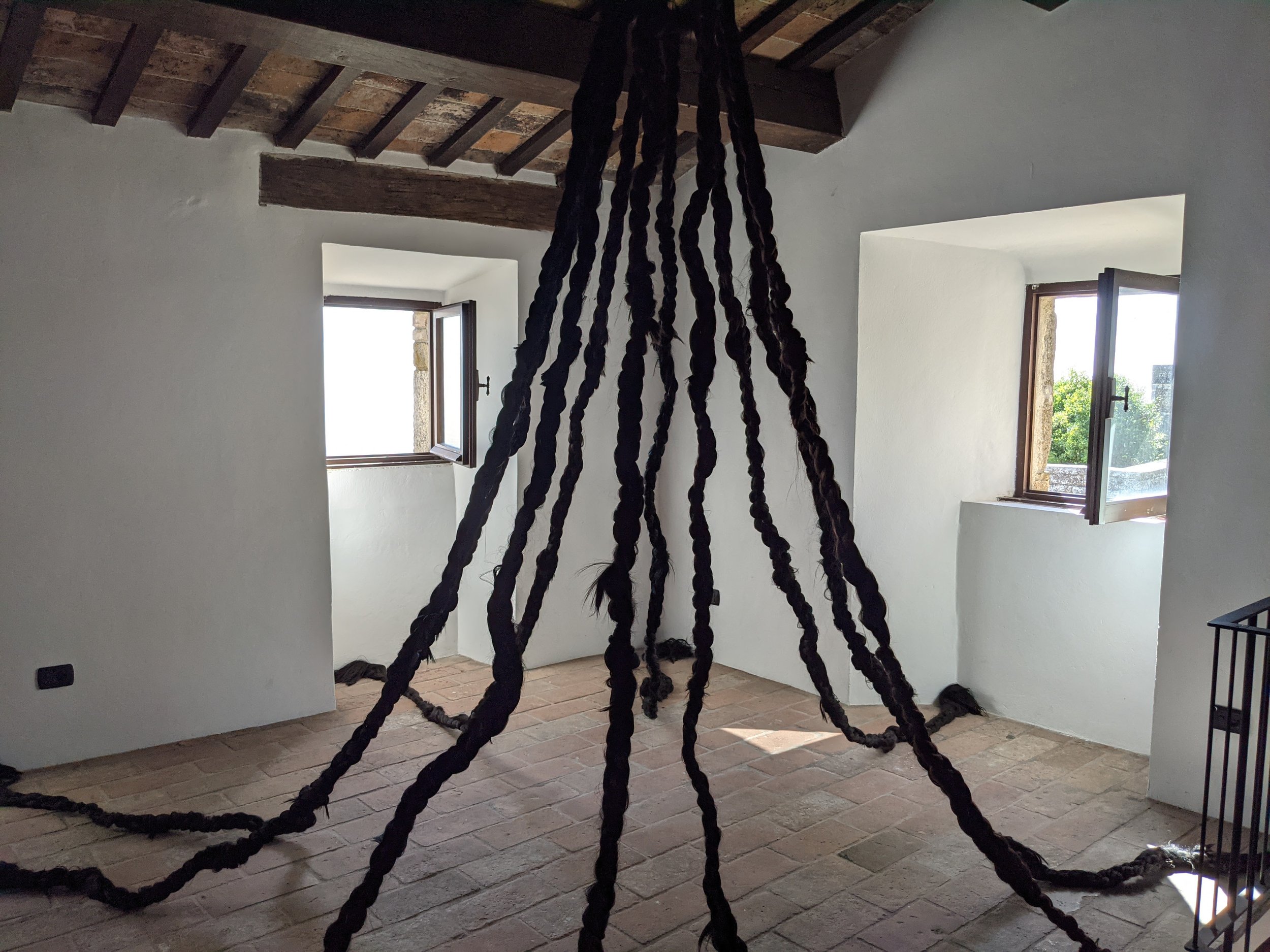Rosalyn D’Mello received an informal training in art criticism, the consequence of having spent four years as associate editor of a compilation of select art writing by Richard Bartholomew. Her first art review, on Richard’s photographic œuvre, was commissioned by The Caravan and was published in 2010. Since then, over a decade-long span, she has covered an exhaustive range of cross-regional artistic practices displayed across contexts, either within the studio or in the form of retrospectives. Her approach to criticism is intimate and insightful, steeped in radical attentiveness performed through observation, conversation, research and documentation. She publishes monthly columns for STIR that straddle personal memoir and art criticism. For OPEN she wrote essay-length features about artists’ studio-based processes and reviews biennales, solo and group shows. Her art criticism has appeared in publications like Tate etc, Art Review, Art Review Asia, Artsy, Vogue, Firstpost, The Hindu, and Mint Lounge, among numerous others. Below is a choice selection of some of her past and recent published articles.
PHILIP WIEGARD’S EXHIBITION PROBES NOTIONS OF LABOUR, IMAGINATION AND COLLABORATION
Stir | September 28, 2023
Column
Dreams That Money Can Buy subverts the categories of art, craft and authorship through the domain of child play. [Read more…]
A LOOK AT VILLA ROMANA'S TRANSFORMATION UNDER ITS NEW DIRECTOR ELENA AGUDIO
Stir | June 30, 2023
Column
A first-time visit and stay at the storied artist residency in Florence allowed this writer to see Agudio's transformation of Villa Romana into 'A House for Mending, Troubling, Repairing.' [Read more…]
FRANKFURT'S SCHIRN KUNSTHALLE'S TRIBUTE TO AVANT-GARDE ARTIST NIKI DE SAINT PHALLE
Stir | June 02, 2023
Review
Viewing the exhibition Niki De Saint Phalle in the company of a sea of random visitors contributed to the visceral gush the fleshy works innately evoke. [Read more…]
ABOUT HENRY MARTIN
Stir | March 11, 2023
Column
Curator Emanuele Guidi’s final exhibition at ar/ge kunst pays homage to a little known yet pivotal African American art critic settled in South Tyrol. [Read more…]
TUNING INTO ASLI ÇAVUŞOĞLU'S SOLO EXHIBITION 'TunState' AT BARRIERA
Stir | February 21, 2023
Review
TunState by the Istanbul-based artist extends her enquiry into naturally occurring states of being, dwelling on the politics of borders, migratory movements, and doomsday capitalism. [Read more…]
WALKING BACKWARDS AS COUNTER-RITUAL
Stir | January 04, 2023
Column
Paulo Nazareth’s 2013 performance, L’Arbre D’Oublier, provokes nostalgic grief for the lost mother. [Read more…]
EXILES AND THE QUEERDOM
Stir | October 24, 2022
Review
Revisiting Sunil Gupta’s 1986-87 landmark series documenting gay Indian men at Delhi monuments in the light of his exhibition, Cruising. [Read more…]
THE 59th VENICE ART BIENNALE MILKS MORE THAN JUST DREAMS
Stir | September 16, 2022
Review
Cecilia Alemani’s main exhibition gathers together lost, stolen, forgotten, marginalised, maternal, non-canonised female, queer, non-binary, and indigenous artistic subjectivities. [Read more…]
LINES INTERSECT IN HANNES ZEBEDIN’S SCULPTURAL INSTALLATION ‘(Non)-Places’
Stir | August 26, 2022
Review
Absentee bodies are among the complex subjects on display as part of the work (Non)-Places at Graben, Vienna, that critiques the rifts between the haves and the have-nots. [Read more…]
WORD OF MOUTH
Stir | January 08, 2022
Column
As I immersed myself further down this path of relating inherited kitchen gestures as a manifestation of feminist citational discourse, I wondered if one of the reasons marginalised cultures are sensitive to culinary appropriations by White-Western contexts is because in the process of appropriation, the dish in question or its preparation gets divorced from its indigenous context. [Read more…]
MUSEUMISING RACISM
Stir | December 10, 2021
Column
I wondered if it (the museum) would serve its function most effectively if it concentrated its resources in returning all the objects its collector spuriously acquired and shut itself down. If it was a museum of the people, which people was it purporting to represent, and who was its intended audience? While on the one hand the newer, more critically reflective displays did allow for more questions to be raised, was it enough, or was it a way of sanitising its own history? How was the city of Schwaz continuing to profit from this venture? [Read more…]
THE UNBEARABLE WHITENESS OF OTHERING BEINGS
Stir | October 01, 2021
Review
In a nutshell, black, indigenous and people of colour would have to wait their turn because it would obviously ‘take time’. The way out, which is, also, we were told, the way in, was still not intentioned for us, even though many of the core ideas upon which white curators world over continue to premise their radicality, have their origin in the wisdom, intelligence, and subversions of BIPOC intellectuals and theorists. For instance, during the course of the second panel, the notion of care and its economy was referred to through the American anthropologist, David Graeber, which struck me as odd, considering so much of the discourse on care was initiated by Black feminists like Audre Lorde. [Read more…]
BOTANICAL BELONGING
Stir | September 03, 2021
Column
An introductory text in the catalogue informs us that the plant was brought to Europe by the German physician, Philip Franz von Siebold in the mid-19th century. He was possibly seduced by the plant’s delicate look and heart-shaped leaves, which led to it being propagated as an ornamental plant in gardens across Europe. Except, in new cultural landscapes, the plant turned invasive. Watanabe’s photographs document the plant’s colonisation of spaces in different parts of the world, from Deshima to Leiden, Swansea, Katowice, New York, London and Nagasaki, with photographs from botanical gardens, housing areas, industrial landscapes and parks. [Read more…]
EARTHWORMS, TERMITES, WOMEN, MOLLUSKS, AND SANDALWOOD
Stir | August 21, 2021
Column
For the scientific community at the time, Darwin’s findings were colossal and earth-shattering. But the feminist in me often wonders if he had only managed to empirically prove what most indigenous cultures and women had always known through their farming, gardening and composting practices, facts that already existed, in some measure, in oral, non-western, and other non-mainstream religious cultures. [Read more…]
THE SAN MARINO FACTOR
Stir | August 04, 2021
Review
In fact, the biennale was punctuated by moments like this one where one had simply to pause in front of a work either because of its material presence and intensity or because of how meticulously researched it was. At the first tower was where I came face-to-face with Binta’s hair-extension based sculpture, Uati’s Wisdom, which refers to the West African deity and water goddess, Mami Wati. Binta has used hair before in her work as a medium to signify how it serves as form of language in African cultures, and to reclaim agency over Black bodies upon which so many forms of colonialist and racist violence was historically perpetuated. The title reinstates into consciousness the Egyptian word for ocean water, Uati, and celebrates African matriarchal traditions. [Read more…]
TRANSPOSING HOME
Stir | July 14, 2021
Review
What feels instantly empowering in Havini’s answer to the call is how she returns agency to the ocean, asking of us as inhabitants of earth, to listen. Instead of a singular narrative voice, we receive a polyphonic narrative composed of underwater sounds she herself recorded during the Schmidt Ocean Institute’s Artist-at-Sea residency she did onboard the research vessel, Falkor, observing the mapping of the Great Barrier Reef, alongside sounds from her ancestral archive, and pan flute compositions performed by her uncle, Ben Hakalitz syncopated by drum beats. [Read more…]
HOW WILL WE SMASH THE PATRIARCHY BY LIVING TOGETHER?
Stir | June 23, 2021
Review
The central exhibition conceived by Sarkis is certainly elaborate and dense, with many instances of political inquisitiveness, however, even to a seasoned art critic, the language used felt opaque and frequently belittling, not just the literary syntax that manifested as wall text but also the visual terminologies that constituted the display. It was as if architects had grown so accustomed to speaking to each other, they have forgotten the etiquette of the conversational mundane. [Read more…]
ARTISTIC SUPPRESSION: MYTH OR FACT
Stir | May 03, 2021
Column
As an art critic, not only have I experienced being suppressed, I have also witnessed it in action as I have been privy to conversations among collectors, gallery heads, and curators in which they voluntarily decide to promote which artists to promote at the expense of already marginalised others. I have seen how one kind of artistic practice is aggrandized while another (specifically those that in some way speak truth to power) are vilified. [Read more…]
THE LOOMING LEGACY
Open Magazine | April 2, 2021
Review/Essay
Given the time-consuming dimension inherent to the medium of tapestry, not to mention the bodily mechanics involved in either sitting on the floor to hand-weave, or in front of a loom, it isn’t as commonly practised as painting. Making a tapestry involves ‘back-breaking’ work. One has to manoeuvre a series of coordinated, synchronised weft movements in order to set-up and allow even the simplest pattern to manifest. Additionally, one is frequently working with the reverse image, since the ‘right side’ is always facing away from the person at the loom. Many weavers use mirrors to circumvent this perspectival challenge. One also needs prep to create one’s preferred coloured scheme in the weft. [Read more…]
THE AFTERLIVES OF STITCHES
Open Magazine | February 12, 2021
Review
As I was gleaning the rich metaphorical connotations inherent in the titular ‘Nestled’, an ongoing staged conversation between Adip Dutta’s meticulous sculptures and ink drawings and Meera Mukherjee’s visionary exploration of Kantha, I felt confronted by its audacity. Experimenter, the host gallery, was offering viewers a context within which to re-locate the artistic practice of Dutta—one of its star artists. The dialogic nature of the show seemed not only obvious, but its logic was also beyond reproach. For anybody who knows the 1970-born Dutta—a member of the Faculty of Visual Arts at Rabindra Bharati University, Kolkata—is undoubtedly aware of how influenced he remains by Mukherjee, who was born in 1923 and died in 1998. [Read more…]
THE FEMINIST COUNTER-APOCALYPSE
Stir | January 25, 2021
Column
What struck me during my differently-abled movement through her artistic documentation of the ramification of India’s continuing actions upon Kashmir that violates the vestiges of its constitutionally validated autonomy was her use of apocalyptic imagery. ‘Immediate trauma finds historic/mythic prototypes. Dire times call for apocalyptic vocabularies,’ she has said in reference to this work. The recurring motif is of a female figure squatting on the ground, lighting a hearth upon which rests a cooking pot. It is a figure of feminist resistance and resilience; a symbol of survival and endurance. [Read more…]
WE NEED TO TALK ABOUT ART CRITICS
Stir | December 26, 2020
Column
The luxury of having a piece of text that could translate an aesthetic or sensual experience to someone who couldn’t physically access it was never as invaluable as it is today. And yet, for most critics, the most existential question at hand is, quite simply, how to survive, especially when the circumstances have become more precarious than before. How, for instance, must one deal with pay cuts when writer fees were already so low; how to find platforms to publish one’s criticism when magazines world over are struggling with shrinking advertising revenues, since their model was based on paid-for publicity by galleries? [Read more…]
SHADOW LIBRARIES
STIR | November 27, 2020
Essay
“We cannot conflate the history of ideas with white men, though if doing one leads to the other then we are being taught where ideas are assumed to originate,” Sara Ahmed wrote in Living a Feminist Life (2017), the book I happened to be reading at the time. I wrote down this excerpt in my journal: “SEMINAL: How ideas are assumed to originate from male bodies.” Ahmed was speaking about her citation policy, and how she was using the academic device as feminist straw to build a shelter that leaves you more vulnerable than safe. [Read more…]
BHANU ATHAIYA: THE SARTORIAL MODERNIST
OPEN Magazine | November 27, 2020
Feature
Pitifully, in the case of modern Indian art, art-historical significance has been configured and reimagined not through scholarship so much as through the diktats of the market. Given this fact, what do we do, for instance, with the immense art-historical vacuum in the case of female students who earned degrees from art schools around India in pre and post-Independence times whose careers were either subsumed by their practice of housewifely vocations or their decisions to follow other better-paying, professional paths? [Read more…]
CAN THE CURATOR REPAIR?
STIR | November 10, 2020
Essay
If museums were historically perceived as being store houses for antiquated treasures or archaeologically excavated loot from colonised territories, did these institutions ever accommodate poverty as a construct? How do you depict or document a pervasive condition that every ruling (therefore decision-making) class prefers to erase from discourse instead of caring to eradicate? I thought about many of the permanent collections of museums I had visited around the world. I hadn’t witnessed any form of discursive interrogation of the lived experience of either localised or global poverty. [Read more…]
Photo by Rohit Chawla
JAYASHREE CHAKRAVARTY: ROOTS & TWIGS & LEAVES—& GLUE
Open Magazine | March 13, 2020
Column
If there’s one thing the Kolkata-based artist, Jayashree Chakravarty hasn’t grasped definitively, despite her education at two of the country’s most prestigious art schools—Kala Bhavan, Viswa Bharati (1978), and MSU, Baroda (1980)—the richness of an almost 40-year-old practice notwithstanding, it’s when to refer to a work as complete. [Read more…]
Jitish Kallat
JITISH KALLAT: THE SPACE TRAVELLER
Open Magazine | January 24, 2020
Review
Through this body of evidence, Kallat hopes to remind us of our collective mortality in the face of galactic time. But he also invokes a sense of urgency by referencing the doomsday clock which was set in 2019 by the Bulletin of the Atomic Scientists as being at two minutes to midnight, with midnight denoting possible self-induced extinction. In 2017, the Bulletin moved the time of the Doomsday Clock a half-minute closer to midnight, in part because of our reckless approach toward nuclear weapons and a growing disregard for the expertise needed to address today’s biggest challenges, most importantly climate change. [Read more…]
Photo by Rohit Chawla
GANESH HALOI
Open Magazine | December 13, 2019
Column
One Monsoon morning in July 2018, I travelled from Ballygunj to Salt Lake to meet the 82-year-old artist, Ganesh Haloi, a longtime Kolkata resident originally from Jamalpur, Mymensingh, now in Bangladesh. Though he’d been unwell, he was finally in a frame of mind that allowed him to receive guests. [Read more…]
INDIAN ART WORLD’S #MeToo RECKONING – PART 1
Firstpost | October 25, 2019
Essay
Patriarchal conditioning runs so deep within the Indian art world’s capitalist subconscious, it seems foundational to its identity. The ensuing void that exists in the place of empathy contributes to the industry’s toxicity. [Read more…]
INDIAN ART WORLD’S #MeToo RECKONING – PART 2
Firstpost | October 26, 2019
Essay
At this crucial moment, sisterhood, through solidarity, is the only ethical force that can truly serve as worthy resistance to the art world’s unchecked oppressiveness. [Read more…]
Photo by Rohit Chawla
JOGEN CHOWDHURY: FORM & FEELING
Open Magazine | September 28, 2019
Review
Like the late Somnath Hore, who was 18 years his senior, Jogen Chowdhury’s physique has always been long and lean. His silver bob-cut hair and moustache are the only visible attributes that attest to his advanced age. His energy, effusiveness and lucidity seem uncanny for someone who has freshly touched 80. On one wall on the first floor of the Kolkata Center for Creativity hangs a cluster of Chowdhury’s self-portraits. His profile reappears in each one as if unaltered by time. [Read more…]
They Died Laughing by Bani Abidi
BANI ABIDI: THE LAST LAUGH
Open Magazine | September 9, 2019
Review
Abidi’s artistic gaze is a considerate one in that she brings into focus narratives otherwise sidelined by political obscurantism, infusing them with an absurdist humour in order to critique systemic oppression. Her video works in particular are saturated with audio-visual footage that is edited such that they seem invested in hyper-probability, so that the fictional is disguised as believably real. [Read more…]
From Mithu Sen's (Un)Mansplaining, Venice, 2019 (Image Courtesy: Mithu Sen)
ARTIST MITHU SEN ON (UN)MANSPLAINING IN VENICE
Firstpost | June 2, 2019
Interview
Artist Mithu Sen's (Un)Mansplaining satirises the oppressive gaze and tongue of the male art critic through the triumphant, exultant privileging of female irrepressibility and the reclaiming of feminist agency. [Read more…]
Léuli Māzyār Lunaʻi Eshrāghi (Image Courtesy: David Martin Harris)
LÉULI MĀZYĀR LUNAʻI ESHRĀGHI
Firstpost | July 28, 2018
Interview
Léuli Māzyār Lunaʻi Eshrāghi situates himself as being of Sāmoan, Persian, German, and Chinese ancestries, a nod to the multiple sources from which we often derive our being and the legacies of our identity. He speaks about his heritage; his location in a land not necessarily his own, while improvising strategies for de-centering and de-colonialising curatorial practices. [Read more…]
Adam Szymczyk. © 2014 Tadeusz Rolke
ADAM SZYMCZYK
Firstpost | July 27, 2018
Interview
Adam Szymczyk reflected on some of the ideological consequences of his curatorial paradigm while also addressing the rising climate of hostility and xenophobia and its implications on the display of artistic practices. [Read more…]
An excerpt from Chandan Gomes’ People You May Know
CHANDAN GOMES
Firstpost | July 2, 2018
Interview
The rest is People You May Know, a raw, confessional, fleshy and messy photo-novella-like series of correspondence that isn’t afraid to confront, head-on, the trope of two strangers meeting in virtual space and their failed and successful attempts to construct and evade the notion of embodiment. [Read more…]
ASLI ÇAVUŞOĞLU
Eau & Gaz | April, 2018
Epistolary essay
Because you are perpetually itinerant, because it would require immense strategy and pre-planning to track you down to one location long enough for a letter to reach you; this ‘email’ is my best bet. Forgive me my audacity in wanting to call it a letter instead. The demands of poetry often conflict with notions of truth. You of all people know this well … that poetry must sometimes be summoned to supply evidence when fact cannot, or where fact fails because it has been appropriated by poisonous ideology. [Read more…]


